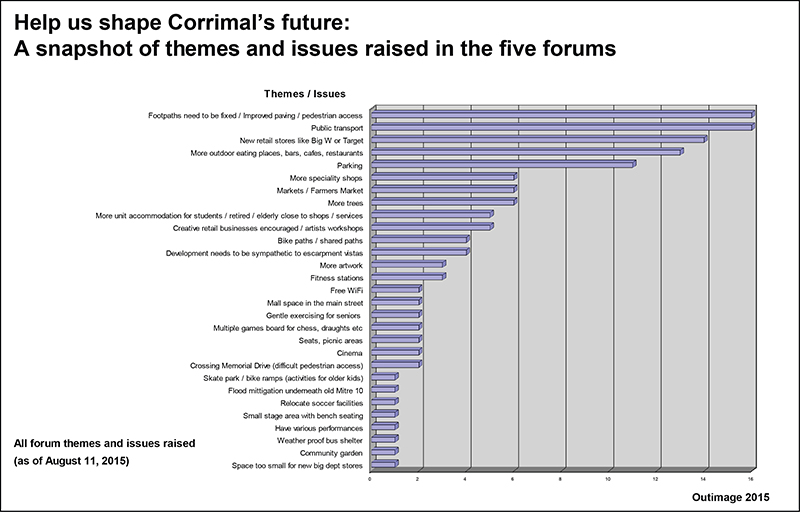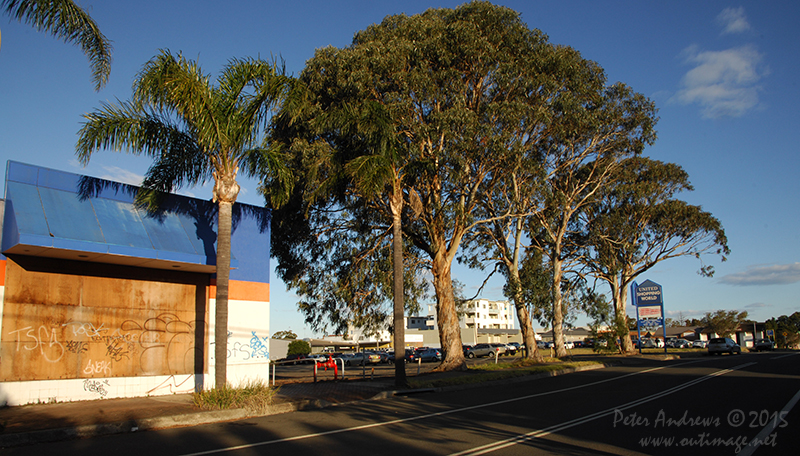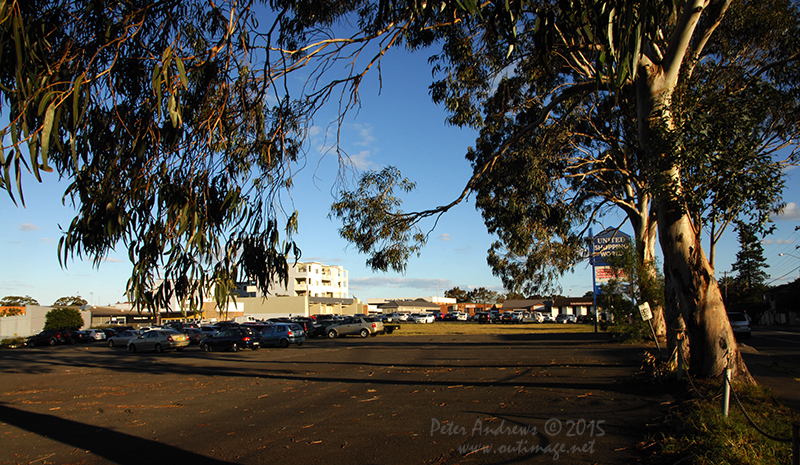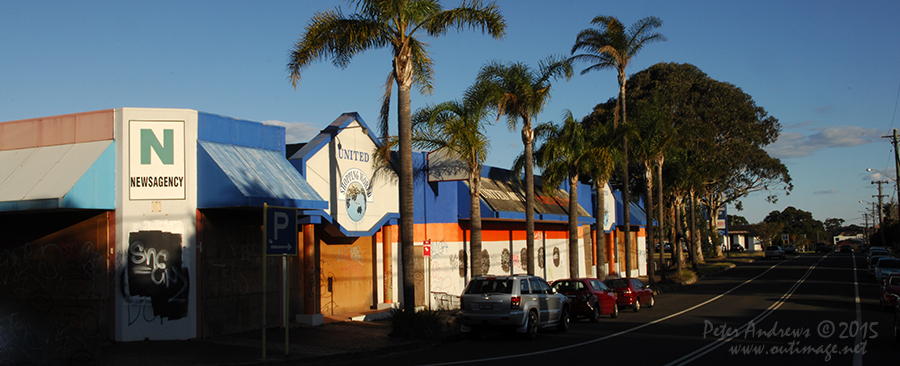 |
| Contact
info for anything relating to this submission and / or
Corrimal's future plan: |
|
 |
| Email: corrimal@outimage.net |
 |
| |
 |
|
 |
|
|
|
|
|
 |
| Links to some of my photo assignments: |
|
 |
 |
 |
Extreme Sailing Series Singapore Day 2, Feb 7, 2015
by Peter Andrews. |
 |
|
 |
 |
 |
Sydney Hobart 2012 start
by Peter Andrews. |
 |
|
 |
 |
 |
| Davao del Sur and Cotabato Provinces, Aug 2012. Assignment by Peter Andrews. |
 |
|
 |
 |
 |
| Sunny Winter's Day, Wynyard Sydney, June 2012. Photos by Peter Andrews. |
 |
|
 |
 |
 |
Sydney Hobart 2011 start.
By Peter Andrews. |
 |
|
 |
 |
 |
| Sydney - Gold Coast. July 30, 2011. By Peter Andrews. |
 |
|
 |
|
|
|
| Submission |
 |
| A snap shot of Council's forum discussions and the draft plan |
| On August 11 2015, I reviewed all the available comments within each of the themed discussion forums of the Wollongong City Council’s: “Help us shape Corrimal’s future”. In that quick review (noting that at this time, the sample size was too small for a proper survey), I was only seeking to isolate the main issues and themes raised thus far. With some numbers entered into a spreadsheet and the results from each of the five discussion forums consolidated, 29 key topics or issues were defined. |
 |
 |
 |
From the 29 topics and issues, the top 10 sharing the top six rankings (highest to the lowest) are as follows:
• Footpaths need to be fixed / Improved paving / pedestrian access (16)
• Public transport (16)
• New retail stores like Big W or Target (14)
• More outdoor eating places, bars, cafes, restaurants (13)
• Parking (11)
• More speciality shops (6)
• Markets / Farmers Market (6)
• More trees (6)
• More unit accommodation for students / retired / elderly close to shops / services (5)
• Creative retail businesses encouraged / artists workshops (5)
This is just a snapshot of what are the important things people in Corrimal were thinking about. Having lived within the area for most of my life, I can relate and agree with most. I especially agree with the footpaths needing to be fixed, especially in the town centre (or CBD) and the area around the north bound bus stop (which in places is far too narrow with an uneven surface).
But the topics that stood out for me were those that relate to the creation of new business that often included new shops, cafes, restaurants and big retail stores. Having recently worked in a major transport infrastructure planing role for the state government, I understand that such ideas are all great in theory. But the reality is for any new businesses of such a broad spectrum to be able, not only establish but also to continue to survive (as it is also for those already established), Corrimal will need a significant increase in the density of its population to be able to support any existing and new commercial activity.
Finally there was one critical issue for Corrimal’s future that was raised only once within the public forums and therefore, did not make it into the top six rankings as shown above. This is the issue of flooding in the town centre and the Draft Corrimal Town Centre Plan document covers what really is huge problem in significant detail. The document also rightly concedes that flooding “limits redevelopment and new development opportunities” (P. 16) and this is an enormous barrier for any future growth for Corrimal.
But flooding also continues to be a major problem those within the community now who have to continue living with the risk and fear that any one day in the future, their business infrastructure or in the case of nearby affected residents, their property will be flooded. If Corrimal town centre is to have any chance of improving its current situation as well as establishing a foundation for any future growth, wouldn’t flood mitigation be perhaps the most important issue to address right now?
Considering recognition of potential impacts of climate change where predictions indicate a hotter and drier climate with an increase of more intense storm events, perhaps it is time to concede that we don’t really need any more studies into past flood events. What we really do need now, is some action towards planning and construction of new infrastructure that could potentially assist in mitigating all (if not most) of any future flooding from the occasional intense storm event and winter East Coast Lows’ that our region is increasingly becoming more familiar with.
Having seen how Singapore deals with excessive stormwater and flood mitigation, I have drawn on that knowledge to produce a draft conceptual plan for review and discussion that may be worth some serious consideration by council and others and that concept is discussed later in this document. |
 |
| New business in Corrimal needs population growth |
To achieve such a sufficient increase in population density that can support a sustainable increase of business activity, the community will need to accept and adopt a future that allows for higher density accommodation infrastructure. Such acceptance would also need to extend towards fair consideration of perhaps including a cluster of quality high-rise apartments, built somewhere within Corrimal’s town centre. Without such acceptance, it will continue to be difficult (if not impossible) for an appropriate situation to evolve that could enable opportunities to support an increase in commercial activity within Corrimal’s town centre.
Opposition to high-rise was raised within the discussion forums. However as we walk around Corrimal now, we see many empty shops; an entire run-down shopping complex completely boarded up; and we see more often than not, numerous new small business start-ups recently open only to shortly fail (two recent examples remain on display, boarded up within Stockland’s Corrimal Court).
Perhaps it is time to approach this with a more open mind and let go of some of the precious ideals that are actually hindering any potential for Corrimal’s community to grow. And if there is a building blocking the view of a mountain, you only need to walk 50 or so metres to one side or the other to see the mountain again.
There are also other important factors that need to be considered when looking at Corrimal’s future and they are the other external forces that are working towards depriving Corrimal’s town centre of further growth opportunities. |
| |
 |
The old run-down United Shopping World shopping complex facing Underwood Street Corrimal completely boarded up.
Photo © 2015 Peter Andrews, Outimage Australia.
|
| |
| Corrimal's competition |
Just in the market of groceries within the northern suburbs, Corrimal now faces strong competition with Fairy Meadow, Woonona-Bulli and Thirroul. While Corrimal has long had a Woolworths and Coles, recent expansion in Fairy Meadow has been profound. Over recent years, Fairy Meadow had refurbished its Woolworths and a new Aldi was built soon after. Now Fairy Meadow also has quite a large new Coles supermarket, much bigger than that in Corrimal.
Fairy Meadow has also been very kind to smaller operators, such as with the continued success for the very popular and locally owned Leisure Coast Fruit Market and Garden Centre.
To the north at Bulli, a new Woolworths is being built and this can be expected to erode into the existing market at Corrimal. In nearby Thirroul, what was previously a Bi-Lo grocery supermarket has now been converted and upgraded into another Coles supermarket. |
| |
| Fairy Meadow's success and student connections |
Fairy Meadow is indeed a standout and its success obviously stems from the local overseas student population resulting from the successful business activities of the University of Wollongong. This success for Fairy Meadow has also been further enhanced by the free bus shuttle that effectively connects Fairy Meadow’s town centre to the university, the university’s accommodation at Campus East, and the Wollongong CBD.
As for Corrimal to tap into that success, just extending the free shuttle bus in the hope of achieving similar results would just not work, simply because Fairy Meadow already has everything Corrimal has, if not more.
For an overseas university student, time management is critical to the success of their studies and therefore, why would they add another 20 to 30 minutes of additional travel time when whatever it is they are shopping for is already available in Fairy Meadow or Wollongong and closer to where they live?
As for seeking more specialised products they can’t find in Fairy Meadow or Wollongong, students have the opportunity to purchase online via the internet or in their free time, they will catch a train from North Wollongong (because all express services stop there) and spend a few hours shopping in Sydney.
So however you look at it, there only seems to be one factor that really stands out that could significantly help Corrimal’s town centre commercially grow. With the vacant shops, an abandoned boarded-up shopping complex and ongoing signs of failing start-ups, Corrimal’s town centre currently appears to be facing a steady journey towards decline. If Corrimal’s town centre is to have any chance of securing a brighter future, there really needs to be a significant increase in population density and it really needs to be within walking distance to the commercial heart of the town. |
| |
 |
The open car park behind the former United Shopping World shopping complex, facing Underwood Street Corrimal.
Photo © 2015 Peter Andrews, Outimage Australia.
|
| |
| Potential opportunities supporting higher density living |
To justify building large high density accommodation projects, there obviously needs to be a potential market for such property. But as this is just a discussion in the absence of any market research, it is still worthwhile to consider any potential market opportunities based on information we are often reminded about in the daily news media and these can be examined in further detail in appropriate future research.
Such potential market opportunities could include servicing the needs for:
• people in Sydney facing difficulties in locating suitable accommodation for either purchase or rent;
• the large cohort of the baby-boomer generation potentially reaching retiring age and looking to downsize, closer to the beaches but just far enough away from Sydney’s traffic gridlock;
• overseas students (indeed a growing market further enhanced by our falling dollar) seeking attractive alternatives to existing university facilities.
There are some obvious opportunities available to sustain increase the density of the population of Corrimal, if only there were the available accommodation opportunities; such as for those people in Sydney just seeking alternatives. And as the tertiary education sector continues to grow in providing education opportunities for overseas students, additional higher density accommodation within walking distance of Corrimal’s town centre could provide an attractive alternative to existing university accommodation facilities.
With an increase of overseas student numbers living within Corrimal’s Town centre, then there would be a strong supporting argument for the community to extend the free bus service from Fairy Meadow to Corrimal; because the basic purpose of this service is to provide free transport for overseas students studying at the University of Wollongong.
Considering Corrimal’s current situation of where it has been difficult for quite some time now to sustain any further commercial enterprise; mainly as a result of a limited and low population density (a lack of customers) and now, facing further challenges from surrounding towns like Fairy Meadow and Bulli; now would be a good time to reconsider options of significantly increasing Corrimal’s population density with some genuine consideration of high-rise apartment facilities.
People all around the world living in high density communities built within a commercial town centre enjoy the benefits of just simply taking a lift down to the street below to walk to nearby cafes and restaurants. Compare this to a situation where much of the nearby population live well away from a town centre and therefore, need to get into a car to drive to a town centre where they will then need to find somewhere to park. And if they drive, they are unable to enjoy a couple of glasses of wine with a restaurant meal, simply because they are driving. It all just sounds too hard and it is of little wonder as to why it can be really difficult to sustain small business growth within this type of community model.
But for any real chance of new housing developments that could include building either medium to high density accommodation within Corrimal’s town centre, the problem with flooding and the limitations that come with it have to be resolved. Without any resolution of this problem, basically no reasonable development that could provide any of the benefits described above could ever be built in Corrimal’s town centre. |
| |
| Flooding |
It is well documented that flooding is a huge issue to any further development within Corrimal’s CBD and much money has been spent by Wollongong Council, first with the initial “Towradgi Creek Flood Study” in 2003 and the review of that study in 2015. But now we face the challenges of global warming and as I’m writing this paper at my desk in Corrimal, the region has just been belted by the effects of another East Coast Low which formed just offshore where in the last 24 hours, possibly over 200mm of rain has fallen in parts of the region. The only difference between this and what happened in August 1998 was that all that amount of rain back then, was concentrated into just a couple of hours.
Regularly reported findings of where climate change now means a future of a hotter and drier climate with an increase of more intense storm events are increasingly becoming more familiar for all of us. So even with all the knowledge achieved about local flooding in the 2003 study and the recent review of that study, do we really know how accurate this knowledge is in a context where we are well within a situation of where the boundaries continue to shift to levels never seen and where the limits are effectively unknown?
During the afternoon of August 11, 2015 and armed with a camera to take photos, I walked the from the point where South Corrimal Creek exits a stormwater drain near Ziems Park; followed the route of the creek back up Tarrawanna Road (to the entry point of the stormwater pipes); then up to the location where it passes under The Avenue. From here, I then traced the course of North Corrimal Creek as best as possible, walking up Francis Street to Collins Street and down to where North Corrimal Creek passes under Collins Street at its intersection with Willow Grove. I couldn’t access the location where the creek enters the stormwater pipes behind Underwood Street, but continued to proceed to the exit point on the other side of the Princes Highway next to Memorial Park, taking more photos in the process.
In some of the locations where each creek was above ground, vegetation was heavily overgrown, which understandably can be a problem for stormwater drainage in a flood situation and the photos taken clearly document this.
In the Draft Corrimal Town Centre Plan document, the document extensively covers the issues with flooding. It also concedes that flooding “limits redevelopment and new development opportunities (P. 16) and on page 30, ‘Action 12’ (explore options for flood prone land) is defined:
“Working with the Floodplain Management Committee on the Floodplain Risk Management Study and Plan, future desirable development scenarios and building forms will be investigated and modelled to understand the impact of flooding on developing feasibility.”
However, with consideration of the condition of existing stormwater drainage infrastructure which was proven in 1998 that it was incapable to prevent flooding and damage to existing property in Corrimal’s town centre and beyond, shouldn’t the focus be on improving what actually we have now?
What we have now actually prevents any consideration of any realistic growth opportunities for Corrimal’s town centre and without those opportunities, Corrimal can only continue on a journey of decline within a commercial sense while its neighbour, Fairy Meadow, continues to achieve high levels of success.
Singapore is a place where I have spent much time over recent years and it is a place that is very limited in the amount of space that it has for its population of roughly 5.5 million (http://www.singstat.gov.sg/statistics/latest-data); who mostly live in very high density high-rise developments clustered around town centres. Singapore is almost on the equator and therefore depends on its well-thought-out extensive stormwater drainage systems that were initially built to include enormous redundancy to accommodate any future development. They are well designed to cope with any extreme tropical rainfall events and these systems continue successfully protect the many community and commercial town centres located all over the island.
Corrimal is not Singapore, but there is an opportunity to consider what works there and examine the benefits of initiating a similar approach of building a permanent solution that includes enormous built-in redundancy and designed with a holistic view of how to mitigate flooding of the entire stormwater catchment and downstream waterways.
If a new well designed stormwater system could be successfully built to mitigate flooding of Corrimal’s town centre, other locations within the Illawarra which also live with the risk of flash flooding during extreme storm events could also benefit from the knowledge and experience achieved.
If Wollongong City Council it wants Corrimal town centre to grow (as well as demonstrate that it is a “city of innovation”), it needs to recognise that Corrimal doesn’t need another study on determining future impacts of flooding. What Corrimal needs is for council to provide a new well designed stormwater drainage system that can not only mitigate any worst-case-scenario flash flood events but also to accommodate the needs of any future development. And from what I have seen done in Singapore, the issue with flooding in Corrimal’s town centre is something that can be fixed. |
| |
| A flood mitigation concept for Corrimal |
The following is just a draft concept that I have been thinking about over since walking over sections of North and South Corrimal Creeks and I must disclose at this point that I’m not a civil engineer, nor am I qualified in flood mitigation.
To arrive at this draft concept, I had examined numerous reports including the Towradgi Creek Flood Study of 2003 and the Draft Corrimal Town Centre Plan document. I have carefully looked at the problem locations as well as the reported behaviour of the 1998 floodwater in Corrimal. I have made the effort to incorporate a holistic view of the entire system of both North and South Corrimal Creeks and Towradgi Creek. So I ask that when you read the following, please keep in mind that the entire concept is a complete package and anything taken from it needs to also incorporate consideration of the entire system of all three creeks.
Key to fixing the problem of flooding in Corrimal’s town centre is accepting the fact that in 1998, North Corrimal Creek had reached a point where it overflowed down Francis Street to find its way into South Corrimal Creek and this all happened at the point when the town centre was already flooded and could take no more water. South Corrimal Creek from the point east of the Princes Highway basically has (apart from overgrown vegetation) an unhindered path to flow down to Towradgi Creek.
Now I clearly recognise that the Draft Corrimal Town Centre Plan document highlights that: “Any proposed redevelopment in the flood-affected area of the Town Centre would need to provide evidence that the impact of the development will not alter flood behaviour and compound flooding elsewhere.”
I agree with that statement, but only to a point as “not altering flood behaviour” is a statement that serves no purpose in seeking a solution to mitigate flood behaviour.
In the 1998 flood, all of the water eventually made it to Towradgi Creek, each side of the overhead bridge of Memorial Drive. And when North Corrimal Creek reached its limit, it then overflowed into South Corrimal Creek at a point when flooding within Corrimal Town Centre had already happened. So when a flood reaches this point, all that water eventually gravitates to one location and that is the overhead railway bridge at Towradgi Creek.
Dealing first with downstream location at Towradgi Creek, there is now space available at the southern portion of the Corrimal Cokeworks site that could be utilised to construct a rather large flood retention pond, designed to capture and slow down any excessive stormwater flow before it passes under the overbridge of the South Coast Railway line.
As for further upstream and to reduce the risk of flooding of Corrimal’s town centre, two large stormwater tunnels designed to accept all the overflow from North Corrimal Creek could be built under existing road infrastructure to divert all excessive flow to South Corrimal Creek.
The first tunnel would commence at a flood retention pond constructed in the undeveloped flood-prone land where North Corrimal Creek passes under Collins Street. From that pond, the first tunnel could be built underneath and follow the route of Francis Street down to Underwood Street.
The second tunnel would be basically designed to capture any excessive overflow that finds its way to the low point of Underwood Street, where the original course of North Corrimal Creek crosses into the car park behind the now closed shopping centre. It could also be constructed to only capture any excessive flow, to ensure normal flow levels can continue to pass through the existing stormwater pipes to ensure a regular flow of water is provided to maintain the health of North Corrimal Creek downstream from Memorial Park.
From a point below the existing stormwater drain under Underwood Street, the second large tunnel will continue south beneath Underwood Street to connect with the first tunnel under the junction of Francis and Underwood Streets. From this point a larger tunnel (to accommodate flow from both previous tunnels) would continue underneath Underwood Street towards Tarrawanna Road to eventually run parallel to the existing underground stormwater pipes for South Corrimal Creek, southeast and under the Princes Highway to exit into a widened open and deep valley. This will also be the same location as the flow from the existing stormwater pipes from South Corrimal Creek exit into the open valley.
At this point where the two stormwater flows meet, there is vacant land between the existing creek, the Short Street car park, Corrimal Community Library and Corrimal pool and this land can be excavated to construct a second flood retention pond.
There is sufficient space to widen the South Corrimal Creek at this point basically all the way to its junction with Towradgi Creek. But there is also more available space for another larger retention pond south of the Ziems Park Cricket Oval to Towradgi Creek and west of Memorial Drive. There is also the option to excavate a portion of vacant land south of Towradgi Creek to increase the size of the retention pond to cope with the excessive flows from both creeks.
From here, the excessive flow from the combination of the two creek systems has been slowed with the excess from the third retention pond allowed to continue under Memorial Drive to flow into the much larger forth retention pond located at the southern end of the Corrimal Cokeworks site.
For any excessive flow captured east of the Princess Highway in North Corrimal Creek (already vastly reduced by the previous diversions to South Corrimal Creek), this flow will also enter the forth retention pond at the Corrimal Cokeworks site at its northern end. From here, all the combined floodwater from all three creeks can then be released back into Towradgi Creek just before the rail bridge with a flow rate that has been reduced through retention methods at the location where the existing junction of North Corrimal Creek and Towradgi Creek is now. |
| |
|
| |
| About me, my background |
• Have lived in the Corrimal area for most of my life.
• Have also experienced living within the local community of Bukit Timah in Singapore.
• Recently involved in documenting the extensive planing process for major rail transport infrastructure for the NSW government, including production of the draft and preliminary business case documents for the $2.8B procurement of the state’s new intercity rail fleet.
• Academic qualification in sociology, media, publishing, communication and cultural studies.
I have also lived through having a flash flood of two metres of water, run through the property that I was renting in the Wollongong suburb of Keiraville in August 1998. The following day I woke to find a back yard that was covered in 6 inches of mud. There was a car that I didn’t own that had washed down from the next street upstream that involved a rescue of two young guys. There was some unknown number of wheelie bins, a small refrigerated shipping container (belonging to a commercial fisherman upstream) and just tons and tons and tons of rubbish. It was a sobering experience to say the least trying to negotiate a safe path back to my home only a few blocks away by foot from a university lecture; as my car parked in Northfields Ave was defiantly standing its ground in the middle of a fast flowing river. I had seen things that night that I will never forget and frankly, hope that I’ll never see again. |
| |
| Peter Andrews on LinkedIn: http://linkedin.com/in/peterandrewsop |
| |
|
|
| |
|
| Peter Andrews and Outimage © 2015 |
|
|

